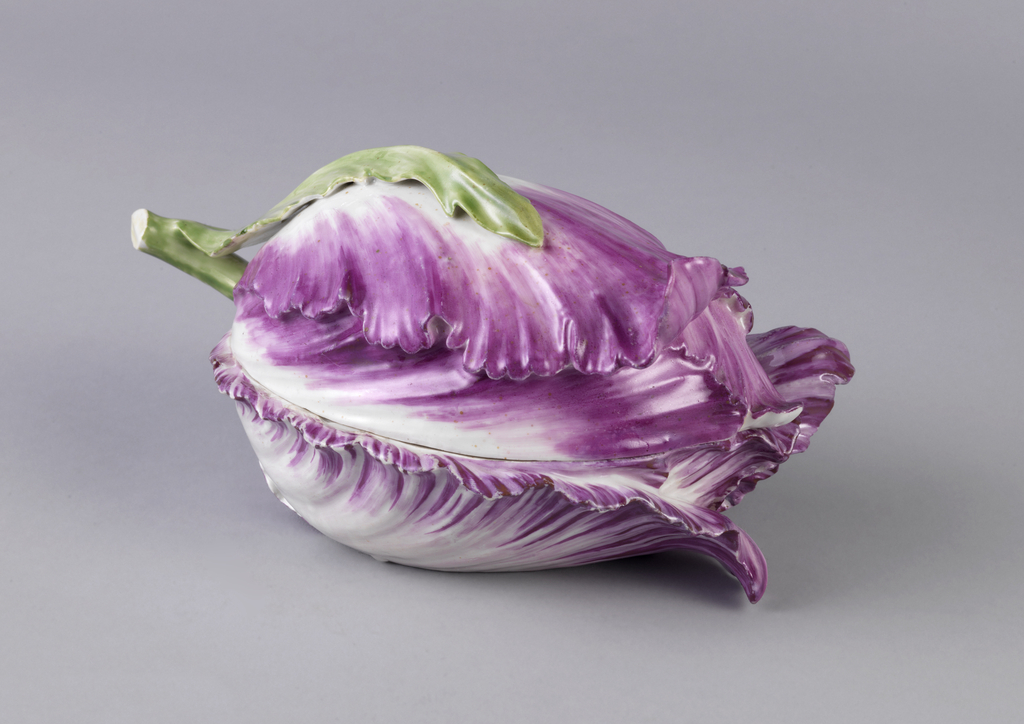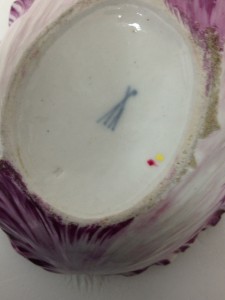This tulip-form small tureen or covered dish must have appeared a wonderful bit of nature, as if fallen from a bouquet, on a dining table. Porcelain started to take the place of sugar sculptures on the most elegant tables of Europe in the eighteenth century. It came at a time when nature was being observed in minute detail and porcelain was bringing color to table décor. Real flowers were not combined with food presentation but their porcelain proxies were often very naturalistic. Instead of giving off floral aromas, the floral table decorations that held food or sauce, such as this small tureen, gave off the aromas of the cuisine.
When I first started to research the rather sloppily painted blue mark on the base of this dish, I could see from the crispness of the porcelain that it was hard-paste and well executed.
Its vague similarity to the crossed blue swords of Meissen added to the feeling that it was German, since the dominant production of hard-paste porcelain of the eighteenth century came from the German states, where the necessary raw materials were easily found. Research and consultation with specialists, including Georges and Margaret Ségal of Basel, and their library of rare books, confirmed my initial cataloguing that the mark was most likely to be that of Volkstadt, in the principality of Rudolstadt, in Thuringia, in what is now central Germany. The name immediately summoned up imagined visions of the locale of The Prisoner of Zenda, a splendidly romantic book –last seen on my English grandmother’s shelves I think-about a plot to usurp the power of a prince-Rudolf of Ruritania in a fictitious middle European kingdom. In Thuringia, an area full of forests and rivers, nature abounds, and within it was the principality of Rudolstadt-the name conjuring up the fictitious scenes of the kind that would no doubt have had dinners with porcelain tulips on the table!
The tulip entered Europe via the Ottoman Empire, in the middle of the sixteenth century, but it was when the Dutch started widespread cultivation themselves, that tulipmania took hold in the seventeenth and eighteenth centuries, and these fashionable and colorful flowers started to appear in engravings and decoration for ceramics and furniture. Usually seen in a bouquet or painted onto a ceramic object or inlaid and stained into furniture, the tulip here is used for its full bulbous form that allows space to put a sauce, soup or small portion of food and be kept warm by the rest of the petals.
The small size indicates an individual portion, or perhaps a sauce for two or three, thus suggesting that for a large dinner party, a table would have a tulip at every second or third place if not in front of everyone. I wonder if the idea was to have a variety of colors of tulip –all in porcelain-strewn on the table.


One thought on “Strewing Flowers on the Table”
Tami Bartlett on September 19, 2014 at 1:53 pm
Lovely piece. Thank you for sharing your research.